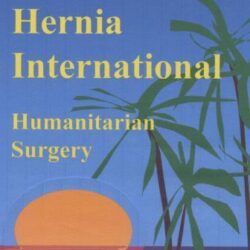CAMPAIGN AT CD DUNBAR HOSPITAL, GBARNA CITY, BONG COUNTY, LIBERIA

APRIL 1-9, 2025.
Cirujanos en Acción campaign with Hernia International at CD Dunbar Hospital, in the town of Gbargna, Bong County, which serves a population of nearly half a million people in central Liberia.
-TEAM
The surgical team was composed of 12 volunteers, members of the Spanish NGO Cirujanos en Acción (Surgeons in Action), collaborating with Hernia International.
Francho Blasco Blasco. Anesthesiology, Mallorca.
Estefanía Fernández Fernández. General Surgery, Lugo.
Elena Fernández Segovia. General Surgery, Málaga.
Leonor Gómez Garrido. Nurse. Seville.
Cristina Martínez Insua. General Surgery, Burela (Lugo)
Mónica Mogollón González. General Surgery, Granada.
Guadalupe Moreno Sánchez. General Surgery, Ibiza.
Pilar Murga Pascual. Anesthesiology. Badajoz.
Mª Jesús Nieto Berrocal. Nurse. Badajoz.
Mª Carmen Perdigones Fernández. Nurse. Seville
Alberto Rando Pérez. Anesthesiology. Mallorca.
Antonio Mª Satorras Fioretti. General Surgery. Burela (Lugo). Team leader.
Four volunteers already had experience; for the remaining eight, it was their first campaign.
The local coordination was carried out, as on previous occasions, by surgeon Dr. Peter George, currently president of the Liberian Medical Association and a member of the NGO Liberian Physicians and Surgeons Without Borders. He, along with two other local volunteer surgeons, Michael and Gloria, accompanied us to perform pediatric surgeries and other procedures for the population.
The visa for the trip was obtained directly at the Liberian Embassy in Paris, as there is currently no Consulate in Madrid. To do so, the passports, requested documents, and the cash payment had to be sent by mail along with a prepaid envelope for return. Suspecting excessive delays, and thanks to the intervention of the local coordinator and Senator Prince Moye, a collaborator living in Paris picked them up by hand and brought them directly to Spain.
– MATERIALS
A total of twenty-four suitcases of supplies and medication collected by the volunteers, weighing 550 kg (two of 23 kg per volunteer) werner donated.
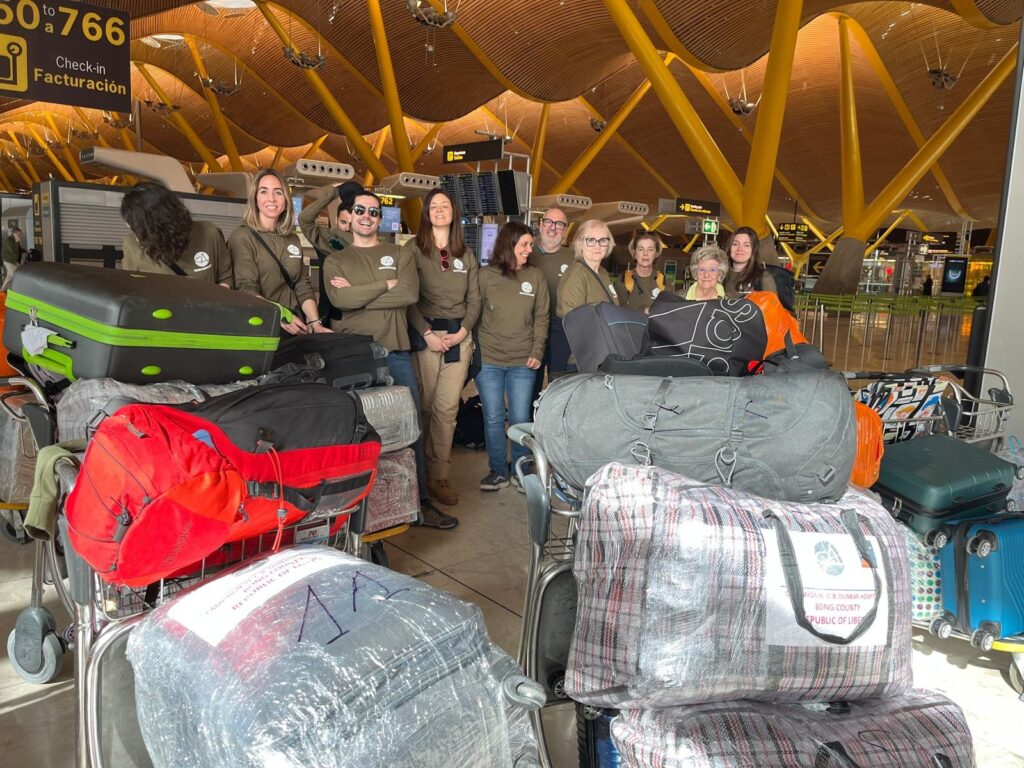
The Public Hospital of Mariña in Lugo donated the total of 40 kg of medication, at a cost of €1,200.
INDA company donated 380 sterile gowns and 200 surgical pijamas.
The supplies included two electrosurgical generators provided by Cirujanos en Acción, as well as four boxes of surgical instruments.
Hernia International sent 100 mosquito nets, to which were added others donated by volunteers.
– TRANSPORTATION
The flight departed on Tuesday, April 1st, at 8:10 PM from Madrid, with Royal Air Maroc, on a stopover in Casablanca and arriving in Monrovia, with a two-hour time difference, at 4:35 AM on Wednesday, April 2nd. There, the loss of a suitcase of equipment was discovered which we were unable to recover until the last day, and which we donated to the local team.
After processing the claim, we began the journey aboard two vans, stopping at the Club Hollywood Hotel in Monrovia. There, we were invited to breakfast and offered rooms for a shower and a short rest. We then met with the Ministers of Health and Finance, Senator Moye (the campaign’s driving force), and other local authorities, after which we set off for our destination, a three-hour drive along well-maintained roads without incident. After arriving at the hospital, we unloaded our equipment and prepared for the next day’s start.
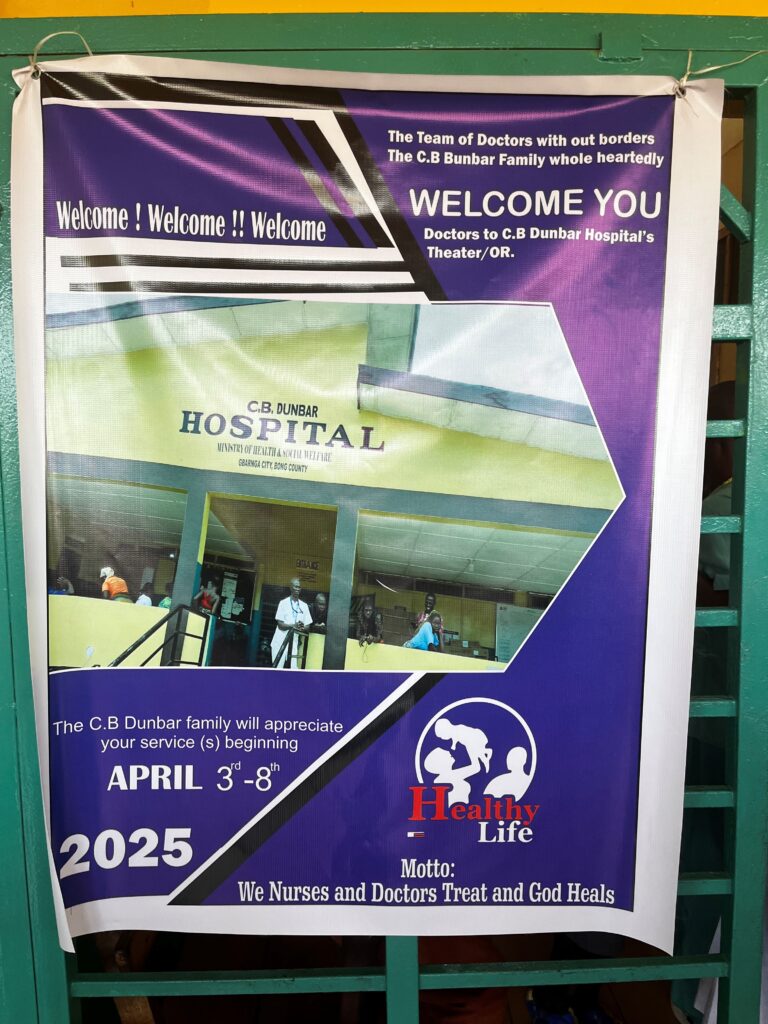
– ACCOMMODATION
* HOTEL
The Passion-1 Hotel has good facilities by the usual standards for African campaigns. Spacious single rooms with showers, air conditioning, television, WiFi that worked irregularly, and were clean.
The price was over budget, but the local organization covered part of the cost, so we paid $45 per person per night, including breakfast.
The electrical plugs were compatible with European ones, so no power adapters were needed.
* MEALS
Breakfast was served at the hotel, with very spicy local dishes, fruit, and supplies from our packaged goods stock.
At midday, light meals like meat empanadas, fruit, and drinks were brought to the operating room, along with water, which was consumed constantly.
We had dinner at the end of the day on the porch of Geeta’s Bar, a restaurant near the hospital, with a limited but varied menu. The most common dish was chicken with rice, with varying degrees of spiciness, from moderate to extreme. We took the opportunity to unwind there after the intense work days.
The first night, our Liberian colleagues invited us to dinner, and the next day we went to Senator Moye’s residence, where we were also treated to local dishes.
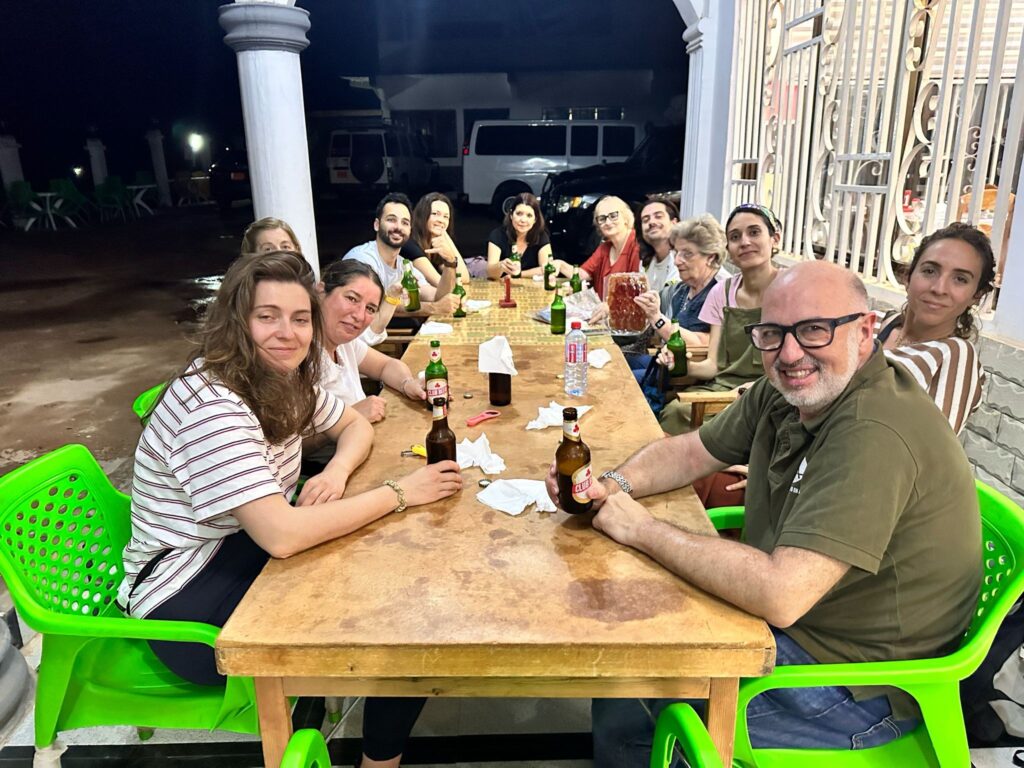
*INTERNET
Connection with a local router provided by the coordinator we had with us. Network outages were common, but we could use it every day.
-HOSPITAL
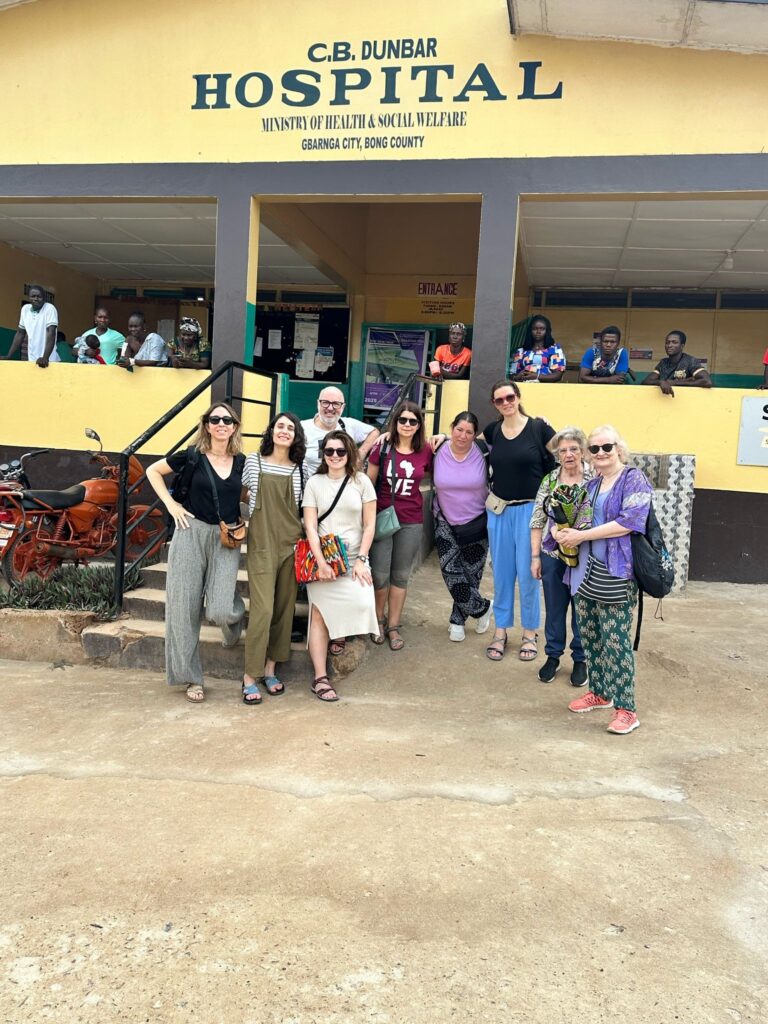
CD Dunba Hospital is a typical African center, consisting of one floor and several wards. Overcrowded, poorly ventilated, and with poor hygienic conditions.
In the inpatient unit, there are several rooms with multiple beds, an indefinited number of more than 100.
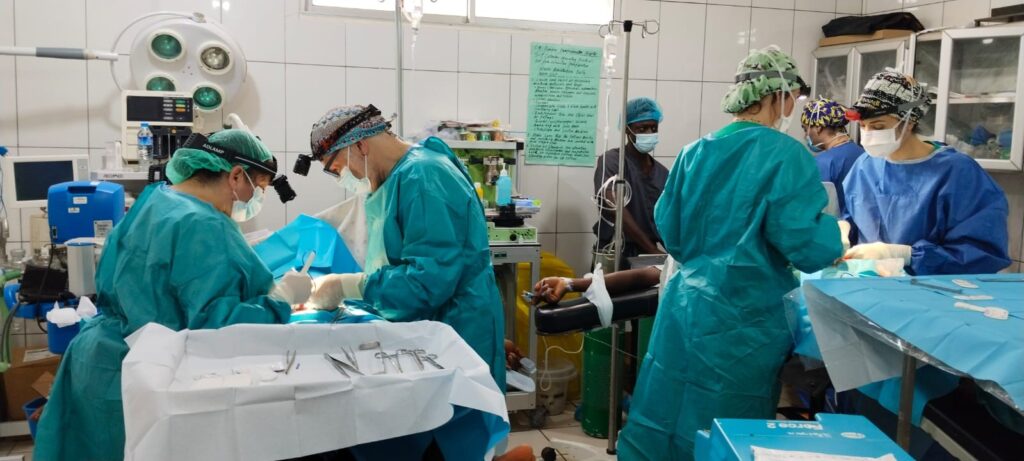
There are two operating rooms with four tables, one of which was used by the cooperating Liberian surgeons. We work in three teams of two surgeons, an anesthesiologist, and a nurse, with the collaboration of local staff, especially the anesthesia nurse Lorba, who acts as supervisor, and nurses Hawa, Jacob, and Emmanuel.
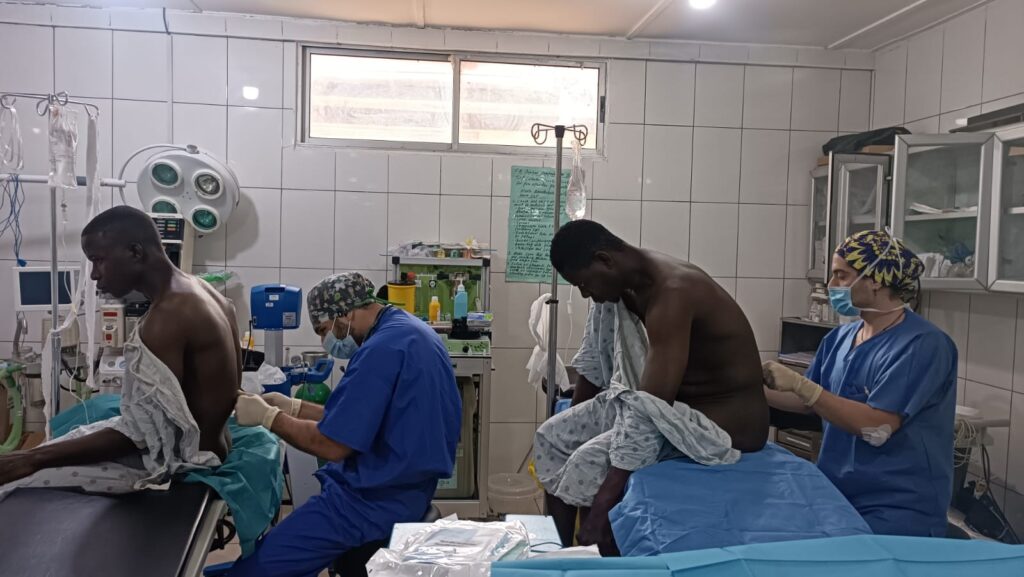
The overhead and portable lamps don’t work, so the use of headlamps is necessary. Several of the existing electric scalpel generators don’t work either, so we used the two we had brought; and the local ones needed a different plug than the standard one we brought. Frequent power outages.
Old tables, with limited mobility. Very poor restraint systems and armrests.
Air conditioning in both operating rooms was operating erratically, which often led to extreme temperatures and humidity, especially in the afternoon.
The operating rooms have ventilation systems, but they are not working, so general anesthesia cannot be performed. There were no problems with the oxygen tank supply.
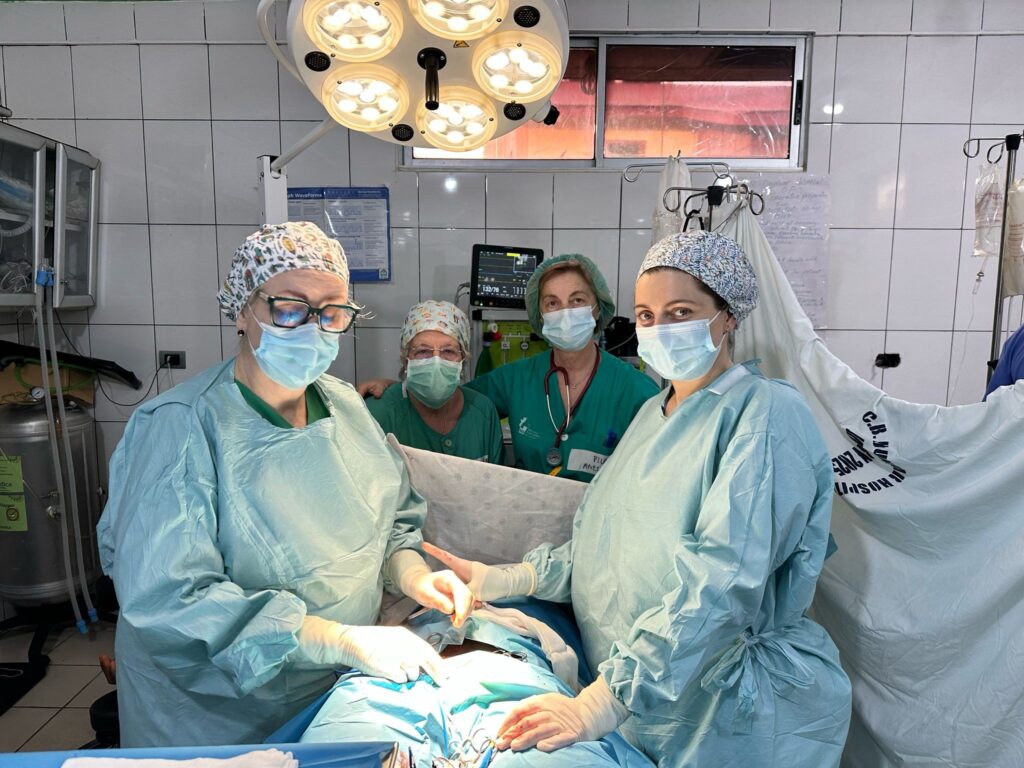
There are autoclaves and personnel to operate them, who worked continuously. We brought sterilization bags to facilitate the task, despite which the instruments in the different boxes were randomly mixed and had to be reorganized at the end of the campaign.
The disposable gowns and drapes we brought were used, as we did not have the re-sterilizable cloth ones.
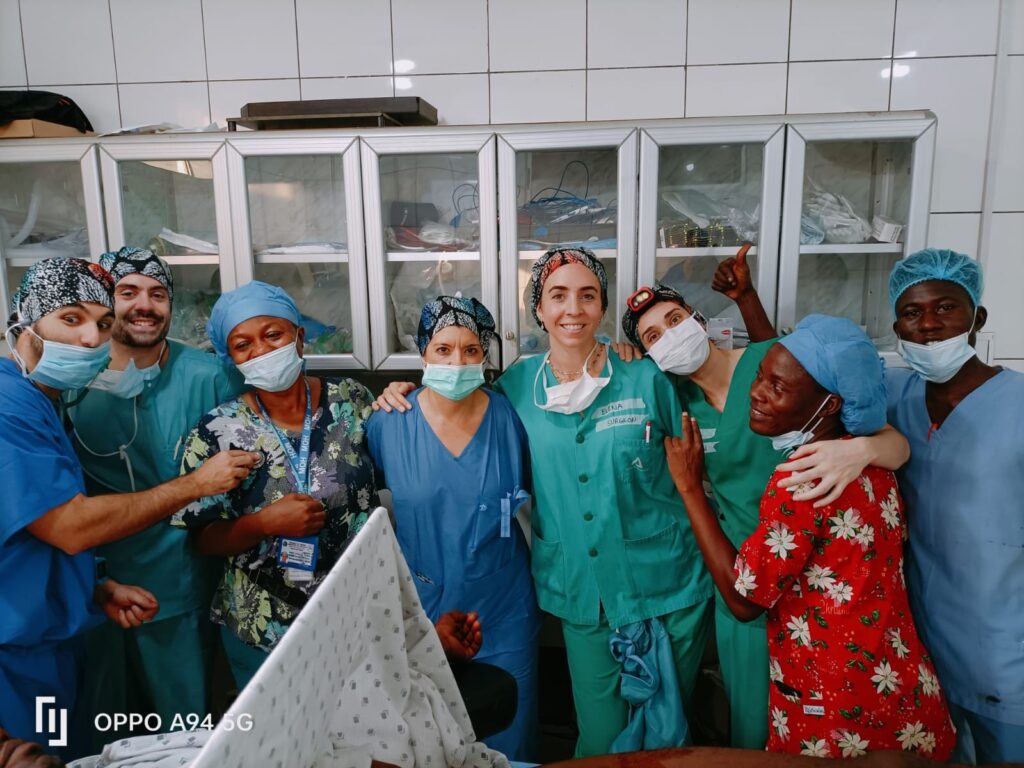
There are several rooms where boxes of medical supplies, likely used in other campaigns, were piled up in an unorganized and uncontrolled manner, accumulating dust without anyone caring for or using them. In these, we arranged and organized the materials and medications.
-DAILY ACTIVITY
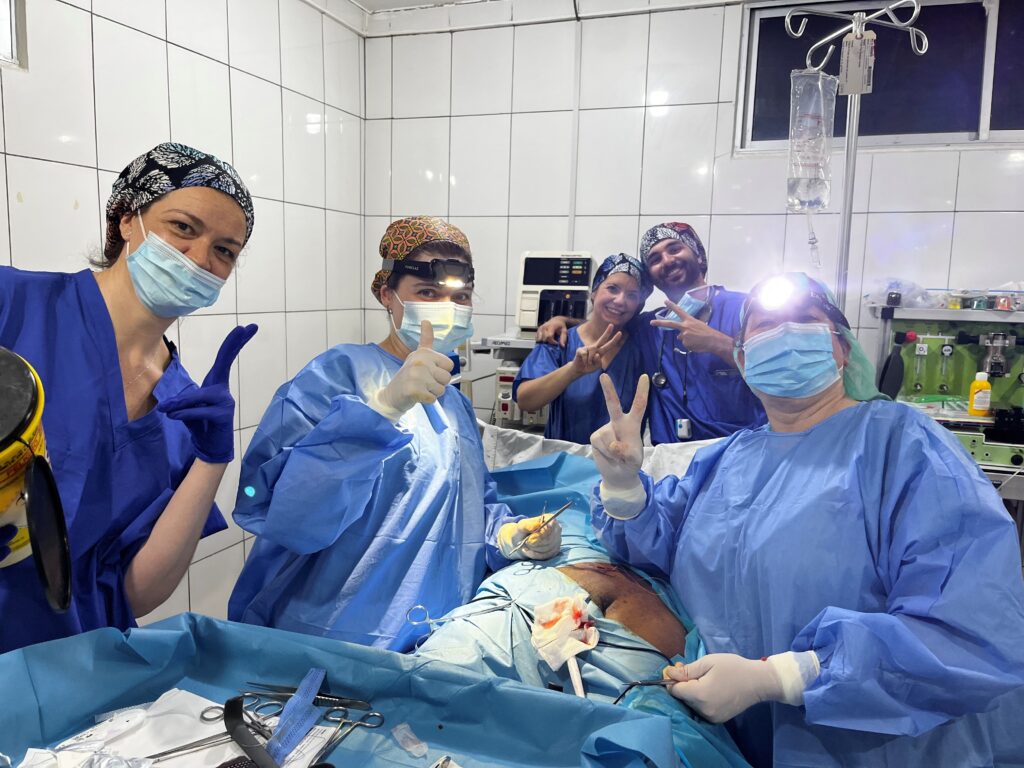
Breakfast at the hotel and transfer to the hospital (a five-minute drive or a twenty-minute walk), arriving at 8:00 AM. The theaters were prepared, the patients previously selected by the local teams were assessed, and surgical activity began, which was about 9:30 or 10:00 AM. Starting on the second day, post-operative patients were visited, dressings were performed, and patients were discharged with pain medication for each one.
A morning surgical session with three tables followed by a short break for a drink, which continued into the afternoon. The session ended at 8:00 PM. If there were new patients, they were assessed for the following day. Afterward, transfer to Guetta’s for dinner and return to the hotel around 11:00 PM.
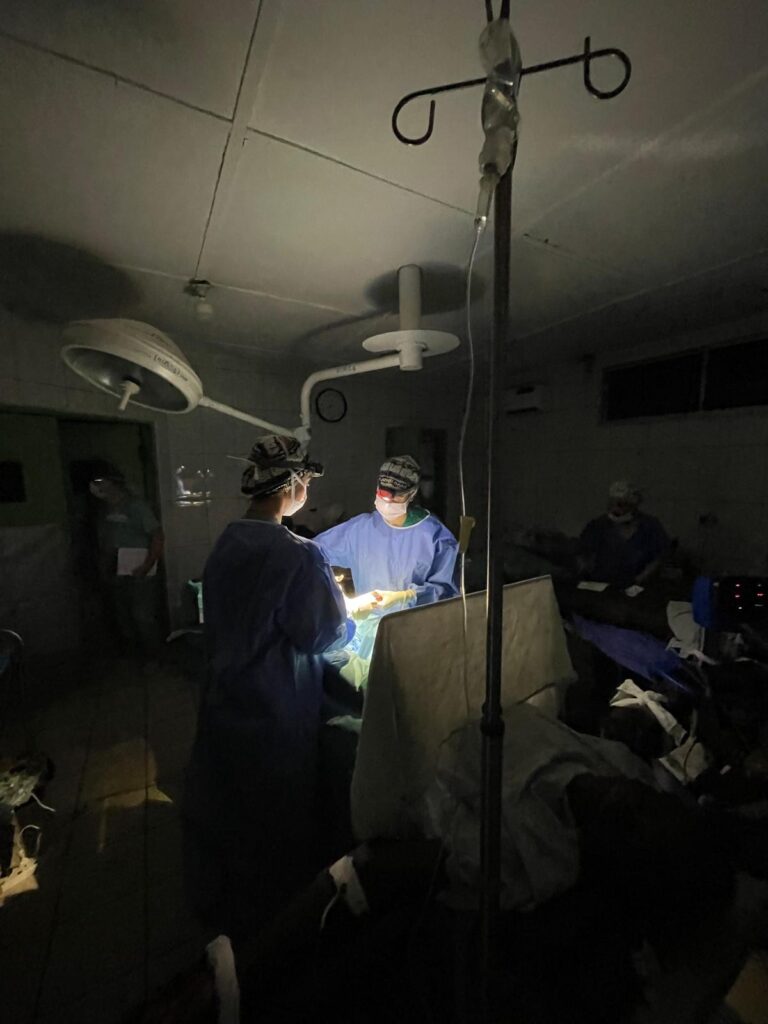
Due to gastrointestinal issues, two volunteers were unable to work one morning each, requiring intravenous treatment at the hotel in one case, although the situation was resolved without major consequences. A couple of minimal punctures were also performed during the procedures, so the patients underwent HIV serology tests, with negative results.
-SURGICAL ACTIVITY
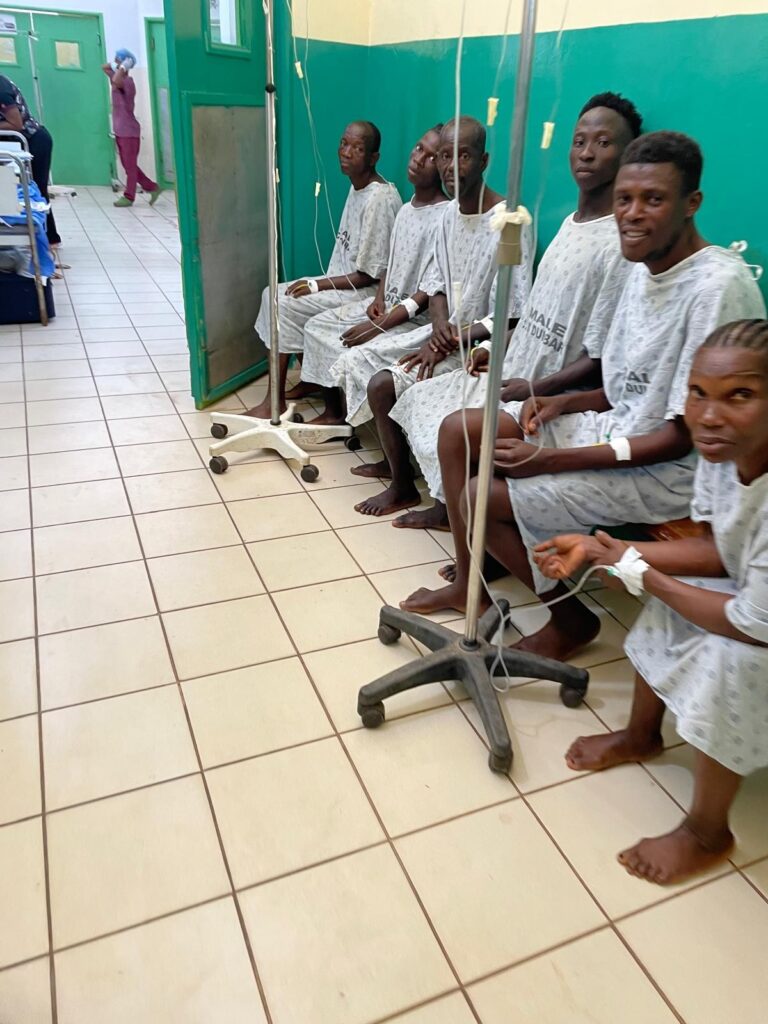
A total of 111 patients underwent surgery, with 131 procedures, 92 men and 19 women, ranging in age from 14 to 80 years.
The most common pathology was inguinal hernia, with 98 cases (64 right, 9 left, and 15 bilateral); all underwent Lichtenstein mesh hernioplasty, except for one Marcy procedure in an adolescent. Most were primary, with six recurrents (all without mesh).
The midline hernias, 9 epigastric and 4 umbilical, were treated with mesh, except for 3 herniorrhaphies for small defects.

Six hydroceles (one bilateral) were treated with vaginal eversion, and a testicular tumor in a young man was treated with orchiectomy. This case had been agreed upon with the local team, and the specimen was sent for pathological examination.
Ultimately, 13 soft tissue tumors (lipomas and cysts) underwent excision.
Most procedures were performed under spinal anesthesia; 10 with local anesthesia and sedation, and only 2 with local anesthesia. No significant anesthetic complications occurred.
The only major complication was ischemic orchitis in a patient who had undergone surgery for a hernia and hydrocele, which required a subsequent urgent orchiectomy.
Two patients with drains remained hospitalized for several days until they were removed.
Operating room capacity exceeded 8 procedures (8.6) per table per day, with an average of 4 in the morning and four in the afternoon for each team.
-RETURN
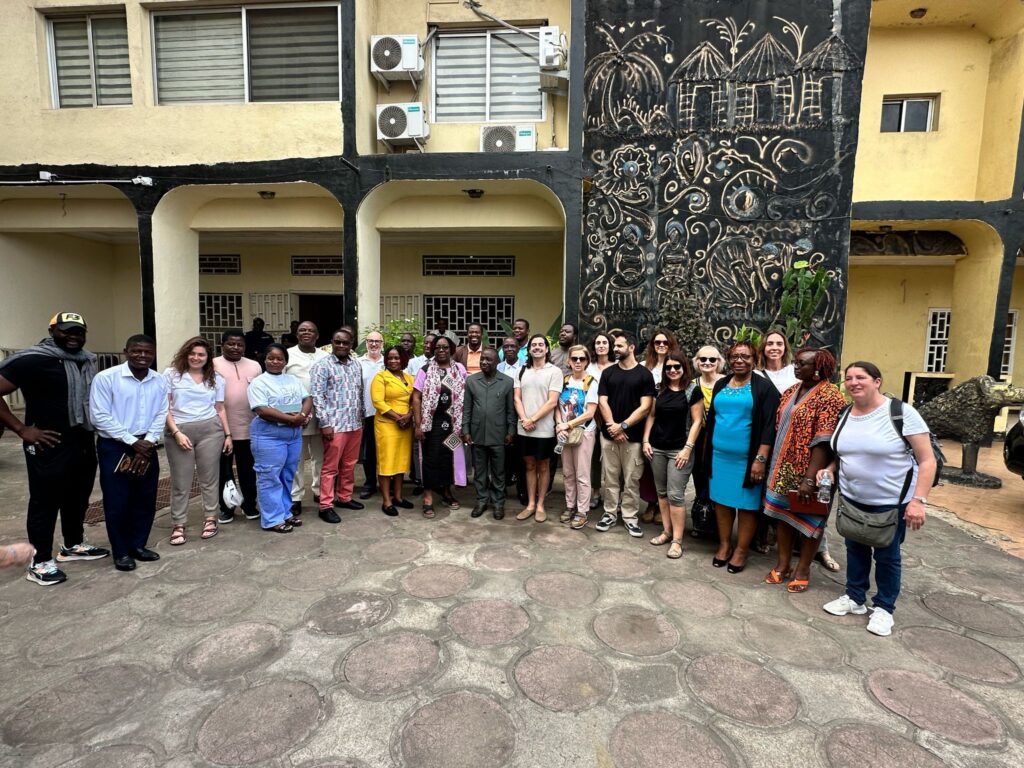
The operation took place over five days, from Thursday the 3rd to Monday the 8th. An attempt was made to add some patients on Tuesday morning, but the local coordinator rejected it, so that day the material was collected and the return trip began, with a visit to the Benson Hospital.l, an old center being renovated for its launch, an unexpected and completely unnecessary activity, but one that wasted our time.
A stop for lunch at the A la Lagune Hotel in Monrovia, followed by a transfer to the airport, an hour and a half away.
On the day of our return, due to an oversight by the local coordinator, we didn’t have a hotel near the airport, as the two existing ones are high-end but expensive. Despite everything, we managed to negotiate the use of shared rooms for $50 per person, including a swim in the pool, to rest for a few hours.
The return flight was at 5:45 AM., which, with a four-hour stopover in Casablanca and a two-hour time difference, landed in Madrid at 7:10 PM on Wednesday the 9th. There, the generators and equipment were returned, we said our goodbyes, and began the return journey home
-EXPENSES
-Medical Supplies: ………………………………………………………….…, Donation
-Medication:………………………..…………………………..………($1,200) Donation
-Visas: $100 per person……………………………………………………………$1,200
-Airfare Madrid/Monrovia/Madrid
$1,000 ticket + $40 insurance: $1,040 per person………………….…..…..…$12,480
-Accommodation
*Gbarna: $45 per person per night (6) with breakfast………………..….…… $ 3,240
*Monrovia: $50 per person……………….………………………………..…….…..$ 600
-Food
*Gbarna: 5 lunch + 4 dinner……………………………………………………..……$670
*Lunch Monrovia: …………………………………………………………….…..……$265
-Internet:…………………………………………………………………….……………$150
-Transportation: $200 per person………………………………………….………. $2,400
______________________________________________________________________
TOTAL……………………………………………………………………….………. $ 21,005
EXPENSE PER VOLUNTEER: $1,750
Of the initially proposed budget for lodging and food ($50 + $35 per person per day), due to a change of destination to an area with higher prices, the local organization covered part of the costs.
-PROPOSAL FOR UPCOMING CAMPAIGNS
The CD Dunbar Hospital is a well-equipped center for conducting surgical campaigns for simple wall pathologies. There is a good patient selection and the facilities are appropriate. Local staff collaborate well, with adequate sterilization.
For future interventions, teams should take certain considerations into account.
-The use of headlamps is essential.
-Lack of gowns and cloth drapes. Need to provide sterile disposable drapes and gowns.
-Shortage of instruments. Boxes must be brought.
-There is no good availability of approved electrosurgical generators, so they must be brought. Furthermore, existing ones do not allow connection with standard plate electrode cables.
-No general anesthesia equipment is available; if pediatric or major interventions are planned, intra- or postoperative mechanical ventilation cannot be considered.
-Loss of luggage on the outbound flight with Royal Air Maroc. Distribute materials/medications to minimize the consequences of loss.
-Need for postoperative oral analgesia, as nothing else is available.

